Spain - Spanish Destinations

Spain has more variety than you could possibly imagine and each of its regions and cities have their own unique character. For vibrant metropolitan centres the likes of Barcelona and Madrid are the cities that never sleep. Granada, Seville and Salamanca on the other hand contain some of the most impressive historical architecture in the whole of Europe. For more typical, laid-back Spain, Tenerife has a fantastic array of beaches and pristine waters that compliment the island's stunning natural beauty.
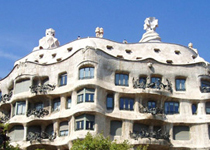 Barcelona
Barcelona
In a privileged position on the northeastern coast of the Iberian peninsula and the shores of the Mediterranean, Barcelona is the second largest city in Spain in both size and population. It is also the capital of Catalonia, 1 of the 17 Autonomous Communities that make up Spain. There are two official languages spoken in Barcelona: Catalan, generally spoken in all of Catalonia, and Castillian Spanish. The city of Barcelona has a population of 1.510.000, but this number spirals to more than 4.000.000 if the outlying areas are also included.
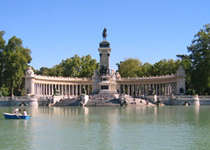 Madrid
Madrid
The capital of Spain, located in the heart of the peninsula and right in the center of the Castillian plain 646 meters above sea level, has a population of over three million. A cosmopolitan city, a business center, headquarters for the Public Administration, Government, Spanish Parliament and the home of the Spanish Royal Family, Madrid also plays a major role in both the banking and industrial sectors. Most of its industry is located in the Southern fringe of the city, where important textile, food and metal working factories are clustered. Madrid is characterized by intense cultural and artistic activity and a very lively nightlife.
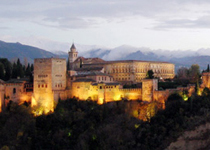 Granada
Granada
Granada is the capital of the province with the same name, situated in the eastern part of the region of Andalusia. Geographical and scenic diversity charactizes the land. There is the coastal area with its warm climate; the extensive, fertile Genil plain; and the mountainous regions with a colder climate, where we find the 3,481 meter Mulhacén, the biggest peak on the peninsula of Spain. The city of Granada is located at the foot of the sierra Nevada mountains at the confluences of the Darro and Genil rivers. Its unique history has bestowed it with an artistic grandeur embracing Moorish palaces and Christian Renaissance treasures. As the last Moorish capital on the Iberian peninsula, it also holds great symbolic value.
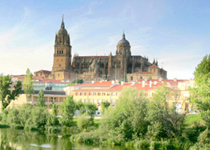 Salamanca
Salamanca
The province of Salamanca (population 363.000), situated in the South-west corner of Castile & León on the borders with extremadura and Portugal, covers an area of 12,336 sq. km (4,763 sq. m.). Lying on Spain's Northern Plateau (meseta), it forms part of the Duero river system where Paleozonic soils, poorly suited to cultivation, have resulted in a landscape of pastures, dotted with trees and bushy undergrowth. Winters tend to be relatively long, with minimum temperatures averaging around 6ºC (42,8ºF), while the shortish summers are marked by average highs that never climb above 20ºC - 22ºC (68ºF-71ºF). Nights can be cool, something which should be borne in mind by the traveller.
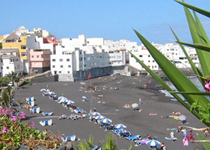 Tenerife
Tenerife
The capital of Tenerife is the second most populated city of the Canary Islands with more than 200,000 inhabitants. Its present importance comes from the development of its port and its commercial calling which made it progressively absorb the civic centres of La Laguna until it reached the status of capital at the beginning of the last century.
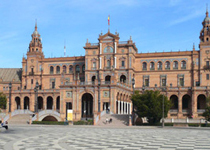 Sevilla
Sevilla
Seville is located in the Southeast of Spain. A provincial capital, seat of the government and parliament of the Comunidad Autónoma de Sevilla (Regional Government). It has more than 700,000 inhabitants, nearly half the population of the whole province. The city of Seville is located on the plain of the Guadalquivir river which crosses the city from North to South. The river can be navigated from Seville all the way to its outlet near Sanlúcar de Barrameda, on the Atlantic coast. In the past the port of Seville played an important role in commerce between Spain and the Americas and it remains today one of the most active river ports of the Iberian peninsula.


